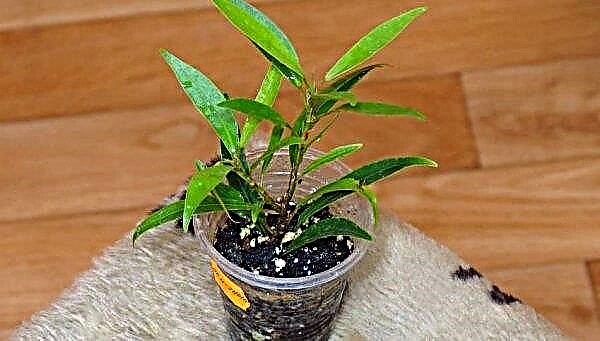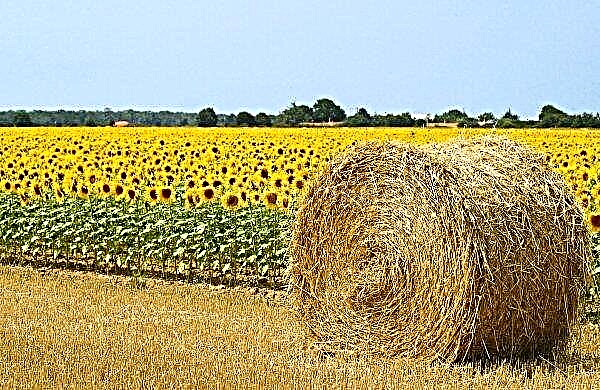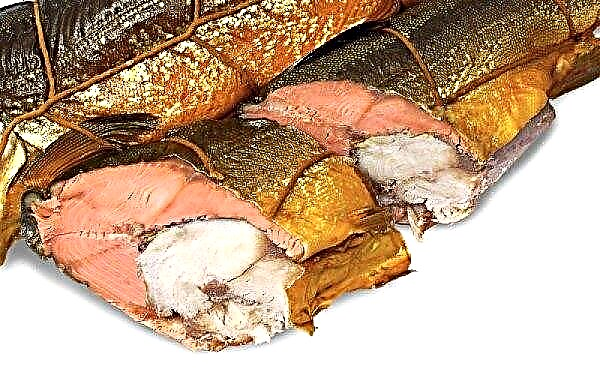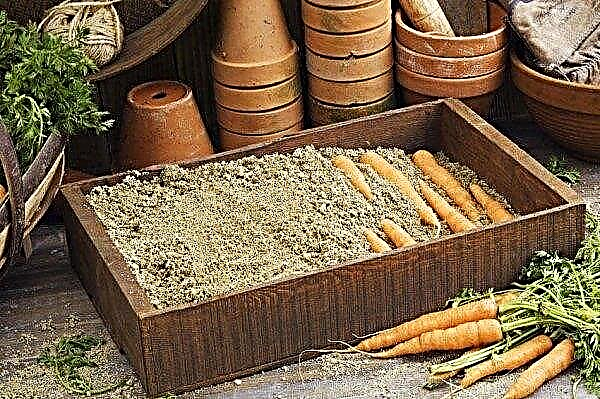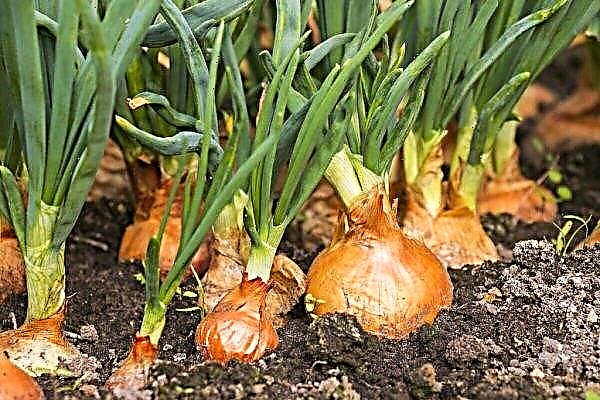Lush and beautifully blooming hydrangea can be an ideal option for decorating a garden or garden. In order to grow it, it will take a lot of effort. And one of the main concerns will be the fight against disease. Although the plant is resistant to various ailments, it will be necessary to spray in a timely manner. Chemicals will help eliminate the symptoms and the illness itself in a short time.
Brown spots on the leaves
Sometimes you may notice that the hydrangea leaf is covered with a brown stain. This is a symptom of one of the most common diseases called septoria. Initially, a small affected area of a round shape will appear on the leaves. The diameter of the spots is usually 2-6 mm. The spots gradually expand and cover the entire surface. The brown leaf gradually dies and falls. Without timely assistance, the plant may die completely. If you do not carry out the treatment, then the stem itself will also stain. It is necessary to do spraying immediately after the first signs of Septoria are detected.

To save the flower, it is necessary to remove the affected foliage and shoot. They are burned to prevent the spread of infection throughout the garden. The place of cut must be treated with a special solution called copper sulfate. They are also recommended to spray healthy branches for preventive purposes. Spotting can be treated with other preparations containing copper, for example, copper oxychloride or Bordeaux liquid.
Important! Different types of hydrangeas are more or less susceptible to certain diseases. For example, a tree-like burns appear more often, and the petiole is resistant to any ailments.
The use of other chemical compounds is also allowed:
- "Topaz";
- Falcon;
- "Ridomil Gold";
- "Profit".

Another reason for the appearance of brown spots is an excess of sunlight and the lack of sufficient moisture for the plant in the soil. For watering, it is recommended to use only soft water collected after rain. To get rid of such manifestations on the leaves, it is necessary to transplant or shade the plant by planting higher crops. If you take these measures in a timely manner, then the spots will begin to gradually pass, and hydrangea will return to its former beautiful appearance.
Dark spots on leaves with white and gray rot
Dark plaque, which gradually turns into spotting, forms on hydrangea leaves due to fungal infection. Such ailments usually begin to develop in the root system, which leads to a decrease in nutrients in the plant itself. The infection enters the soil along with garbage or passes from neighboring crops. On open ground, gray and white rot are rare. Plants that are grown in greenhouses and greenhouses are more often infected.
White rot
Symptoms of this disease are:
- Darkening on the shoots.
- Rotting stems at the base.
- White coating on the leaves.

If timely measures are not taken to eliminate the disease, then a gray coating first begins to appear on the leaves. When white plaque forms on the shoots, they can no longer be saved. Have to immediately dig a plant and burn. Otherwise, the disease can spread to neighboring cultures.
Important! Rot resulting from exposure to the fungus can be cured only at the initial stage of infection.
It is necessary to treat the disease in several stages. First, remove all infected shoots. Then - sprayed with fungicides. Cut points need to be treated with a weak solution of potassium permanganate. Experienced gardeners recommend using mixtures of copper as chemical preparations. It can be a common copper sulfate or Bordeaux liquid.

Gray rot
At risk are young shoots and hydrangea leaves. The main reason for the appearance is considered to be an excess of moisture in the earth. This happens due to excessive watering or a dense, not thinned crown. It is an increased level of humidity that leads to the spread of fungal infections. The main symptom by which gray rot can be identified is mild plaque. Upon contact with the infected area of the leaf, characteristic dark spots appear. Over time, they dry completely, turning the surface into dust.
The treatment of the disease is carried out in the following way:
- After removing damaged shoots and leaves, the cut sites are treated with a weak solution of potassium permanganate. If the stage of infection is too late, then hydrangea is best dug up and burned to avoid infection of neighboring plants.
- A diseased plant is sprayed with chemicals. It can be a 1% solution of Bordeaux fluid or Fundazole.
 Gray rot is just as contagious as white. If it is not eliminated in a timely manner, then other crops in the garden may suffer.
Gray rot is just as contagious as white. If it is not eliminated in a timely manner, then other crops in the garden may suffer.
One of the reasons for the formation of dark spots on the leaves is peronosporosis. This fungus appears as a result of environmental temperature changes. Particularly dangerous is the period when warm, humid weather is maintained with a temperature of +18 ... + 20 ° С. Greasy spots appear on the foliage. With the development of the disease, they begin to darken. To eliminate this fungus, a solution based on 150 g of soap, 10 l of water and 15 g of copper sulfate is used.
Dry and wet black spots on the leaves
Black leaves in hydrangea appear due to a combination of negative factors. Florists divide this manifestation into dry and wet blackening. In the first case, brown spots are observed on the leaves of the bush. If you do not take timely measures, then the plant will gradually dry and may disappear. The main reason that the disease begins to form is too hard water used for irrigation. To avoid this situation, the liquid is settled for at least 24 hours in the tank. Also, such formations may appear due to excessive direct sunlight. Burns can be avoided by planting hydrangea under the shelter of other plants or under buildings.
A wet black sheet is characterized by wilting and subsequent darkening. The reasons for its appearance are:
- sharp jumps in temperature or drafts;
- too frequent watering with subsequent stagnation of water on the surface of the earth under the bush;
- heavy soil, which does not allow moisture to pass and does not allow the roots to receive the necessary oxygen.

So that wet blackening does not spread on the territory of the site, it is recommended to irrigate in accordance with the recommendations of flower growers. If the season turned out to be rainy, then the plant should be given less water. Do not plant a bush in a place that is constantly in sunlight or in drafts. Heavy soil must be constantly loosened and only then irrigated.
Yellow spots on the leaves
Yellowness of leaves may appear not only due to an infectious disease. Many novice gardeners do not even suspect that the problem may lie in poorly selected seedlings, so when buying hydrangeas, you should carefully examine the plant. The best option is to purchase only from trusted suppliers.
Did you know? Hydrangea has a very beautiful blue and blue color due to the fact that aluminum can accumulate.
But even an uninfected seedling may turn yellow. The reason for this phenomenon lies in improper care, due to which a disease called chlorosis forms. The plant has a metabolic disorder. Initially, the yellowing sheet eventually becomes dark and dry. First appears yellow, then raspberry color in neoplasms. Over time, it turns into brown. The sheet dries completely.

Among the main causes of chlorosis:
- Moisture excessively accumulated on the ground. Although hydrangea loves moist soil, it should not be over-watered. The accumulated water at the roots leads to the formation of rot and other fungal infections.
- Lack of normal soil acidity. If the soil is too alkaline, then hydrangea will not be able to grow and develop normally. To avoid this situation, it is recommended to add a little citric acid to the water for irrigation.
- Direct sunlight. Like most crops, the flower does not tolerate excess ultraviolet light, so for planting, you should choose the most suitable place in the garden, where partial shade will reign.
- Lack of mineral fertilizers. Yellowness and spots on the leaves of the plant may appear due to lack of nutrition.
- An excess of organic fertilizers and lime. Experienced growers recommend the use of these substances within normal limits, preventing their excessive use.
The method of dealing with such a phenomenon as yellow spots or chlorosis is very simple. It is enough to adhere to optimal and established standards, to carry out proper care. It is recommended to regularly add a small amount of iron-containing chemicals as a top dressing.
 A normal pH for hydrangea is considered to be 4–6. To determine it, use litmus paper. If it is placed in a humid environment, then in the absence of acidity, it will turn yellow. When its shade acquires a green or blue-green color, this means that the soil has a normal pH level.
A normal pH for hydrangea is considered to be 4–6. To determine it, use litmus paper. If it is placed in a humid environment, then in the absence of acidity, it will turn yellow. When its shade acquires a green or blue-green color, this means that the soil has a normal pH level.
Treatment with iron-containing preparations will help to remove yellowness from the leaves. In the domestic market, these are Ferovit and Antichlorosis drugs. To increase the acidity of the soil, you can prepare a special solution for watering or spraying at home. To do this, it is necessary to dissolve 4 g of citric acid and 3 g of iron sulfate in one liter of water.
Spots can have not only yellow, but also green color in the formation of a disease such as powdery mildew. A characteristic feature of this ailment is the formation of a gray coating under the foliage. Over time, the shoots curl up and die. Hydrangea can completely disappear. To cure it, it is recommended to use one of the modern drugs: Fitosporin-B, Topaz, and Skor.

Hydrangea rust
A rusty or red coating on the hydrangea leaves, which over time becomes the cause of their wilting, appears most often due to a fungal infection. The reason for its formation is an excess of water and the absence of nitrogen additives. The main symptom is the initial yellowness on the leaves. Subsequently, it turns into a rich burgundy color. Over time, the leaves begin to brown and rust; dry spots appear on these places, causing them to fall.
In these neoplasms, a specific plaque is often formed, which, upon contact with it, turns into dust. It is she who is the spore of the fungus parasitizing on the plant. They easily fly around from the leaves, thereby being caught by gusts of wind and infecting other crops.Did you know? The presented hydrangea bouquet symbolizes sincere feelings.
Hydrangea rust is treated by using several proven and current methods:
- removal of infected shoots;
- chemical treatment.
 As the latter, fungicides of domestic production are often used. It can be "Topaz" or "Falcon".
As the latter, fungicides of domestic production are often used. It can be "Topaz" or "Falcon".
Hydrangea annular spotting
The ring blotch that appears on hydrangea foliage is one of the most common diseases of this culture. Initially, it manifests itself in the form of rings of irregular shape. Their diameter usually does not exceed 2 cm.
Since a large number of them appear, the sheet begins to change its shape. Over time, he completely wrinkles and dies. One of the most dangerous symptoms is damage to the buds. They either disappear altogether or decrease in size. The flowers will be small and lethargic.

Unfortunately, at the moment, the means of treatment for this ailment have not been developed to date. The only preventive measure is the choice of healthy seedlings. This disease spreads through seedlings. If the method of propagation by dividing the bush is used, then the mother bush should be completely healthy.
All of the above types of spots sometimes cause irreparable harm to the plant. That is why it is important to follow all the rules of care, planting and transplantation of hydrangeas. Only a timely reaction to diseases, spraying with chemicals and prevention will help keep the shrub beautiful and lushly blooming.


